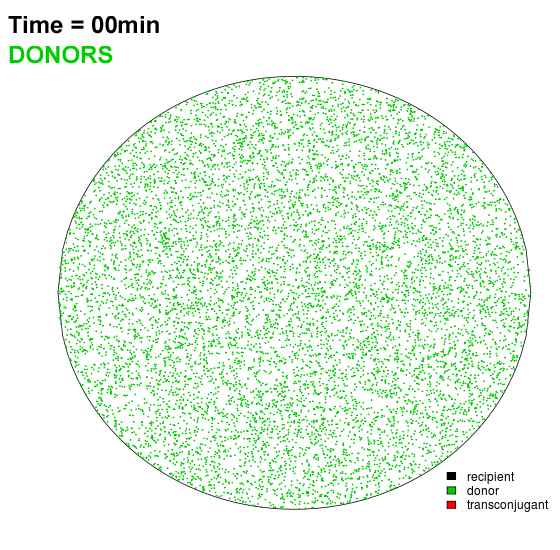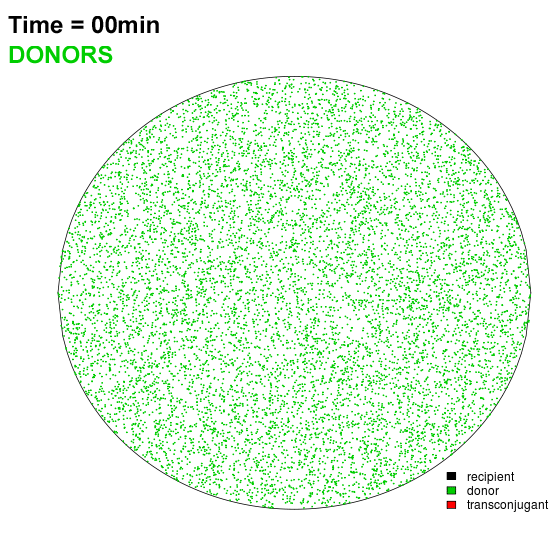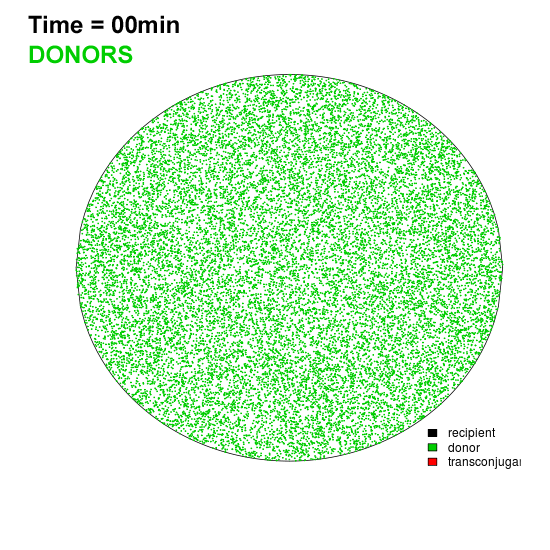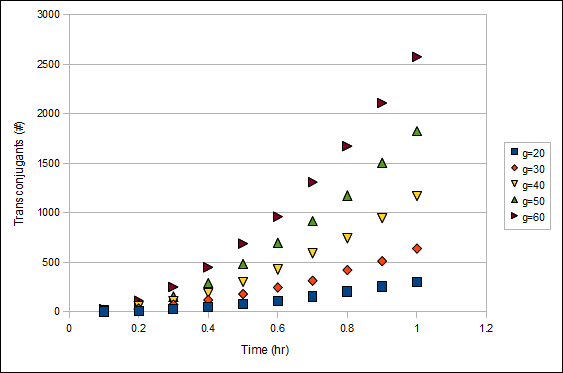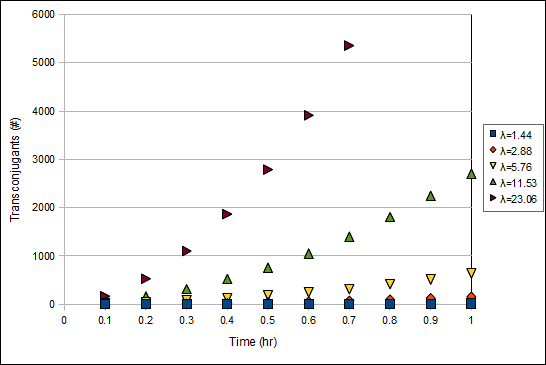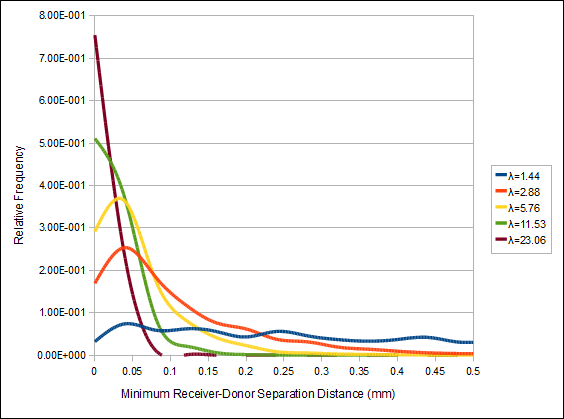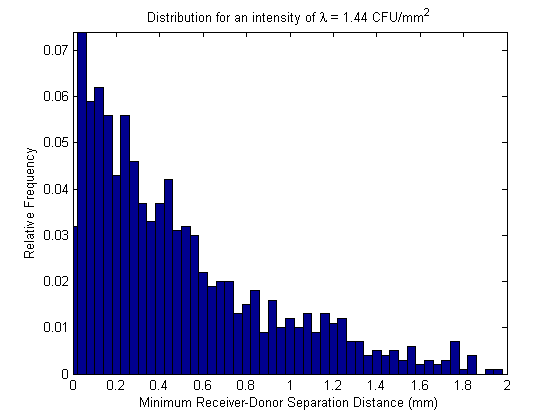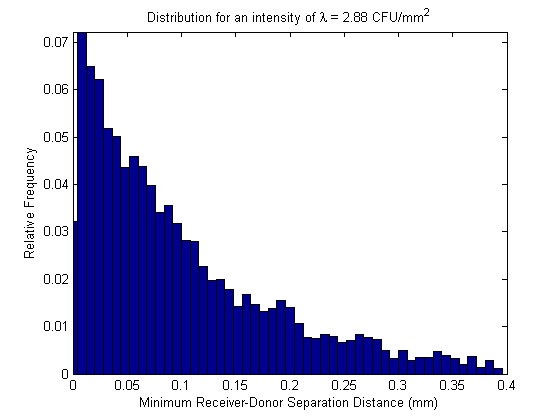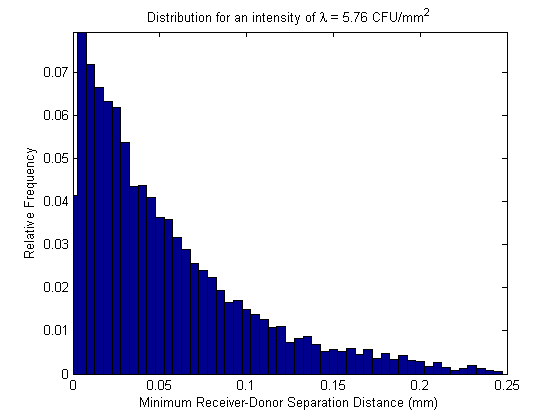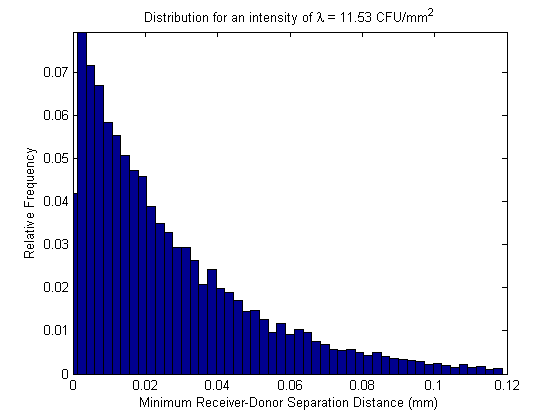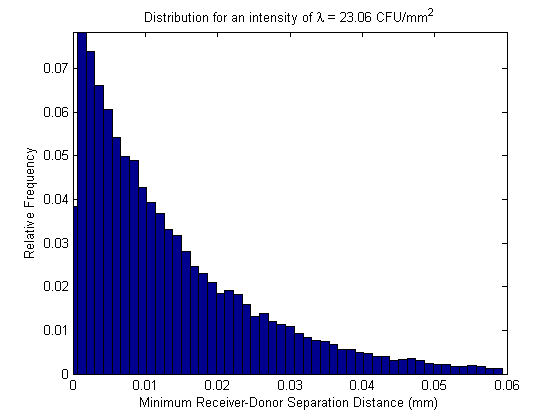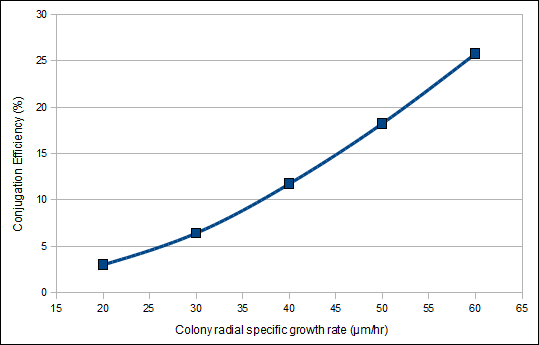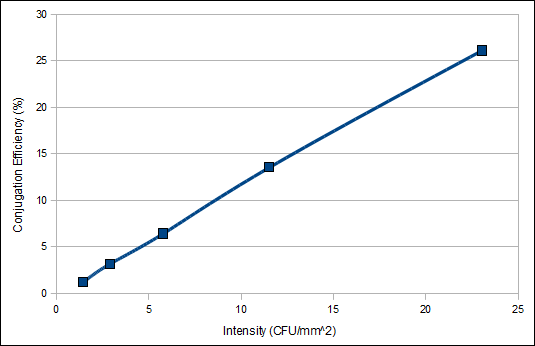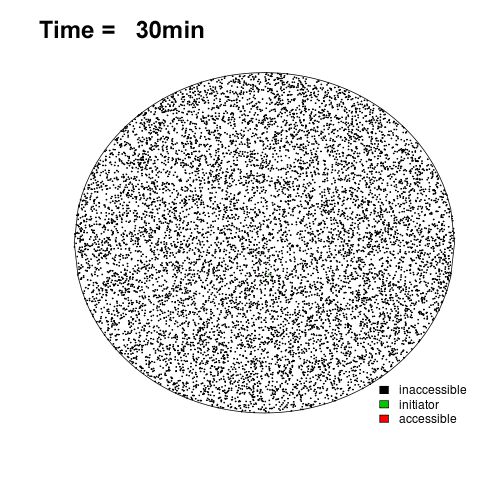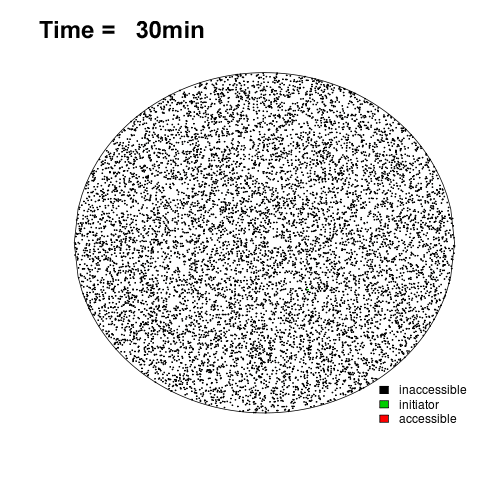Team:TUDelft/Modeling Conjugation
From 2009.igem.org
(→Conjugation Modeling) |
(→Parameters) |
||
| Line 25: | Line 25: | ||
* Initial number of donors (N<sub>d</sub>) and recipients (N<sub>r</sub>) | * Initial number of donors (N<sub>d</sub>) and recipients (N<sub>r</sub>) | ||
| - | Default values for these | + | Default values for these parameters can be found on the [[Team:TUDelft/Modeling_Parameters | parameters]] page. |
==''Spatial distribution of bacteria''== | ==''Spatial distribution of bacteria''== | ||
Revision as of 19:27, 18 October 2009
Conjugation Modeling
Our conjugation modeling work is based on the paper A model for bacterial conjugal gene transfer on solid surfaces [10]. Using a slightly modified model we simulated our conjugation protocol for R751 cells conjugating on a 0.2 μm filter placed on agar for a period of one hour.
Assumptions
- The cells are distributed randomly on the filter at the start.
- The conjugation times used in our simulations are less than the time required to exhaust the nutrients in the medium.
- All cells form a colony (are CFU).
- All cell types (donors, recipients and transconjugants) have identical colony radial growth rates and specific growth rates.
- Conjugation occurs instantly when a donor colony touches a recipient colony. Future versions of the model will integrate a conjugation delay time once two colonies meet.
- Plasmid loss is not taken into account.
- Cells can not move over the surface except through expansion of the colony.
Parameters
The parameters needed for this model are:
- Surface area of media (A)
- Initial colony radius (r0)
- Specific growth rate (gn)
- Colony radial growth rate (gr)
- Maximum numbers of cells sustained by system (Nmax)
- Initial number of donors (Nd) and recipients (Nr)
Default values for these parameters can be found on the parameters page.
Spatial distribution of bacteria
The bacteria are initially distributed at random on the medium, so a distribution function to find the closest cell r would be:
![]()
where λ is the intensity (cells per unit area).
Growth of colonies
While the original model presented in the paper used an exponentially increasing rate for the colony radius, this was changed to a linear rate of expansion for our model. The radius at a point in time is given by:
![]()
Contact between colonies
Two colonies with radius r touch if their centers are less then 2r apart. The model checks this through an iterative process were it examines the separation distance between recipients and donors/transconjugants. Once this distance is less than 2r the receiver colony is turned into a transconjugant.
Conjugation modeling
A large number of simulations were done for various parameter values. The animations below show the creation of transconjugants at low and high values of gr and λ. Higher values of λ lead to more transconjugants since the colonies are closer together and higher values of gr lead to more transconjugants since the colonies come into contact sooner.
Plots from some of the other simulations can be found on the Conjugation Modeling Plots page. The influence of both gr and λ on the growth in the number of transconjugants can be seen in the graphs below.
Distribution of Separation Distances
We can see
|
|
Conjugation Efficiecy
Signal Propagation
 "
"
